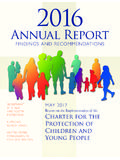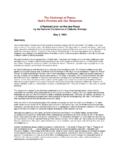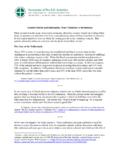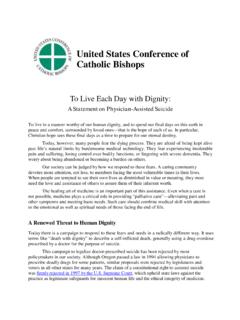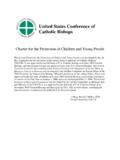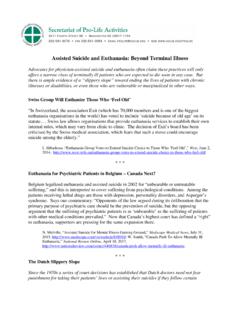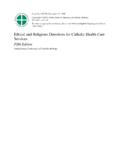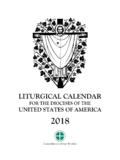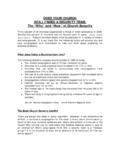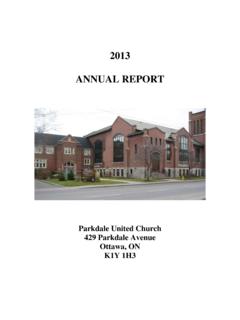Transcription of United States Conference of Catholic Bishops
1 The document A Culture of Life and the Penalty of Death was developed by the Committee on Domestic Policy of the United States Conference of Catholic Bishops (USCCB). It was approved by the full body of Bishops at its November 2005 General Meeting and has been authorized for publication by the William P. FayGeneral Secretary, USCCBC over image: Adobe Stock PhotographyScripture texts used in this work are taken from the New American Bible, copyright 1991, 1986, and 1970 by the Confraternity of Christian Doctrine, Washington, DC 20017 and are used by permission of the copyright owner. All rights from the Catechism of the Catholic Church, second edition, copyright 2000, Libreria Editrice Vaticana- United States Conference of Catholic Bishops , Washington, Used with permissions.
2 All rights Printing, December 1-57455-732-7 Copyright 2005, United States Conference of Catholic Bishops , Washington, All rights reserved. No part of this work may be reproduced or transmitted in any form or by any means, electronic or mechanical, including photocopying, recording, or by any information storage and retrieval system, with-out permission in writing from the copyright States Conference of Catholic BishopsWashington, A New MomentI. A New MomentTwenty-five years ago, our Conference of bish-ops first called for an end to the death penalty. We renew this call to seize a new moment and new momentum. This is a time to teach clearly, encourage reflection, and call for common action in the Catholic community to bring about an end to the use of the death penalty in our these reflections, we join together to share clearly and apply faithfully Catholic teaching on the death penalty.
3 We reaffirm our common judgment that the use of the death penalty is unnecessary and unjustified in our time and circumstances. Our nation should forgo the use of the death penalty becauseThe sanction of death, when it is not necessary to protect society, violates respect for human life and killing in our names diminishes all of application is deeply flawed and can be irre-versibly wrong, is prone to errors, and is biased by factors such as race, the quality of legal represen-tation, and where the crime was have other ways to punish criminals and protect society. For a quarter-century, Catholics have worked with others in state legislatures, in the courts, and in Con-gress to restrain or end the use of the death penalty.
4 New allies and arguments offer new opportunities to make a difference. Under the leadership of our beloved Pope John Paul II, Catholic teaching on the death penalty has been articulated and applied with greater clarity and strength. Many people, especially Catholics, appear to be reconsidering their past support for the death penalty. The Supreme Court and some States , with our active support, have limited the use of capital punishment. Today, there is a serious re-examination of the death penalty its fairness and effectiveness, its II. Our Reflections As Teachers, Pastors, and Leaderssocial and moral dimensions. We renew our common conviction that it is time for our nation to abandon the illusion that we can protect life by taking life.
5 Ending the use of the death penalty would be one important step away from a culture of death toward building a culture of Our Reflections As Teachers, Pastors, and LeadersWe offer these reflections as Catholic teachers,pastors, and leaders. As teachers, we have the obligation to share our Catholic faith and moral tradi-tion, including teaching on the death penalty. While complex, the teaching of the Universal Church is clear. It has developed over time and has been taught most powerfully in the words and witness of Pope John Paul II. Catholic teaching on the death penalty is clearly articulated in the encyclical The Gospel of Life, the Catechism of the Catholic Church, and the Compendium of the Social Doctrine of the Church.
6 In Catholic teaching the state has the recourse to impose the death penalty upon criminals convicted of heinous crimes if this ultimate sanction is the only available means to protect society from a grave threat to human life. However, this right should not be exercised when other ways are available to punish criminals and to protect society that are more respectful of human life. In these pastoral reflections, we do not offer new teaching or doctrine but rather hope to help Catholics better understand and apply this teaching in our own time and pastors, we share the justified anger and revulsion at terrible and deadly crimes. In calling for an end to the use of the death penalty, we do not seek See John Paul II, The Gospel of Life (Evangelium Vitae) (Washington, DC: United States Conference of Catholic Bishops [USCCB], 995); Catechism of the Catholic Church, 2nd ed.
7 (Washington, DC: USCCB, 2000); Pontifical Council for Justice and Peace, Compendium of the Social Doctrine of the Church (Washington, DC: USCCB, 2005). 5to diminish in any way the evil and harm caused by people who commit horrible murders. We also share the hurt and horror, the loss and heartache that are the result of unspeakable acts of violence. We have presided at the funerals of police officers killed in the line of duty and have consoled parents who have lost children. We have heard the anger and despair of victims families who feel ignored by the criminal justice system, society as a whole, and, at times, even the Church. Our family of faith must care for sisters and brothers who have been wounded by violence and support them in their loss and search for justice.
8 They deserve our compassion, solidarity, and sup-port spiritual, pastoral, and personal. However, standing with families of victims does not compel us to support the use of the death penalty. Often, these WRONgLy CONvICTed In 1984, I was wrongfully convicted and sentenced to death for the rape and murder of nine-year-old Dawn Hamilton in Baltimore, Maryland. I spent eight years, eleven months, and nineteen days behind bars before DNA testing proved my in-nocence. In that time, my life had been taken from me and destroyed. The Catholic Church provided me with essential sup-port in my time of need, and I converted to Catholicism in 1989, while I was serving time behind bars. Every bit of my story exemplifies the problems in the death penalty system.
9 The same systemic flaws that led to my wrong-ful conviction, such as mistaken identifica-tion, inadequate representation, prosecuto-rial misconduct, and basic human error, plague the cases of innocent people in prison and on death row. Kirk Bloodsworth, speaking at the USCCB Press Conference launching the Catholic Campaign to End the Use of the Death Penalty (March 21, 2005) families are further violated by the legal processes and public attention that come with capital punishment. For many left behind, a death sentence offers the illusion of closure and vindication. No act, even an execution, can bring back a loved one or heal terrible wounds. The pain and loss of one death cannot be wiped away by another who work in the criminal justice system also deserve our concern, prayers, and attention.
10 Governors, wardens, corrections officers, judges, prosecutors, defense attorneys, and especially those involved directly in executions face difficult choices of life and death, crime and punishment, justice and mercy, rehabilitation and redemption. In addition, some may find themselves required to participate in a process they find morally objectionable. A number of us have also visited people on death row. We have listened to their families who tell of their own fear, grief, and shame. Some who have been on death row have been released after years of facing execution because new evidence has exonerated them. The human loss and cycle of violence in capital cases touches their families too. In this reflection, we encour-age care and compassion for all those directly involved in these matters of life and death.
